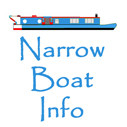So – you’ve decided to buy a narrowboat! The first thing most prospective buyers need to establish is what type of narrow boat best suits the purpose that they wish to use it for. That may sound obvious, but you would be surprised at the amount of people who have rushed into buying a narrowboat, often following their first narrowboat holiday, only to discover six months later that their new purchase is not what they actually required. So what should a buyer look for?
Most narrowboats these days are of an all steel construction; that is, the hull and superstructure (roof, sides etc.) are all made from the same materials. As these are invariably welded, the boat has an integral strength and rigidity and is popular with hire fleets.
There are a number of boats on the cut that have a steel hull, but a superstructure constructed from glass fibre. This reduces the weight of the boat dramatically and can also be less affected by the cold of a canal winter. However, that superstructure needs to be attached to the hull somehow – and that means a join. Anywhere two materials join is a potential leak hazard, and a prospective buyer should determine very early on if a boat of this construction has any evidence of water ingress.
Many traditionalists favour iron plated or even wooden hulled narrowboats, and these can often have beautiful lines. But, like a vintage car, these vessels often require specialist care and this factor should be taken into consideration when looking for your boat.
Once the construction material has been decided upon, the next most common thing people look at is the style of the narrowboat. The rear or stern or the boat is normally one of three very different styles. The traditional or ‘trad’ stern follows the lines of the old working boats, with a pair of doors and a sliding hatch to keep out the worst of the weather. These doors often lead to a rear ‘boatman’s’ cabin, complete with a small stove – great for keeping the steerer’s legs warm when cruising in inclement weather!
At the other end of the stern type is the ‘cruiser’ stern. This is an open area, great for sitting out on during warm summers evenings, and which usually give superior access to the engine compartment. But like everything in life, these also have a downside, and many boaters find that the open back seriously reduces the available living space inside the narrowboat.
Between these two distinct types, the final stern is the ‘semi-traditional’ often referred to as the ‘semi trad’ type. This gives the appearance of a traditional styled narrowboat when viewed from the side, but actually allows the boat crew to remain in the open when the boat is on the move.
The final piece of advice is to always have the boat surveyed before purchase. The importance of this cannot be stressed enough and it is vitally important that when buying a narrowboat you ensure one of the biggest financial commitments you are about to make is a sound buy.



I just wanted to say thank you for such a very well put together website. We live in Bath and are ‘thinking’ about buying a narrowboat and your site has helped me learn more in 1 hour that I could have thought possible.
I hope your boating days are long and prosperous:)
In Peace
Mary
Pingback: narrowboats and dogs - a guide | narrow boat info